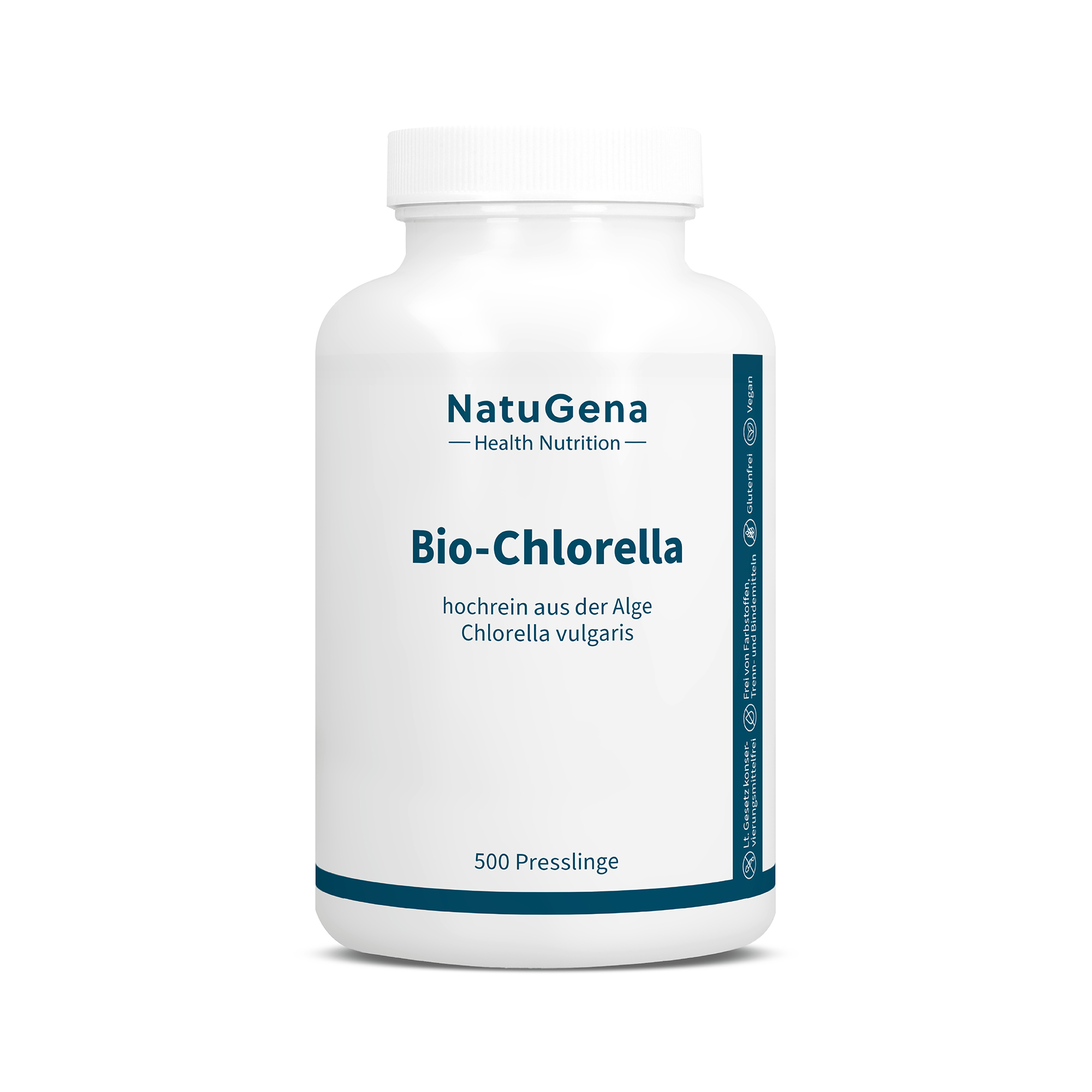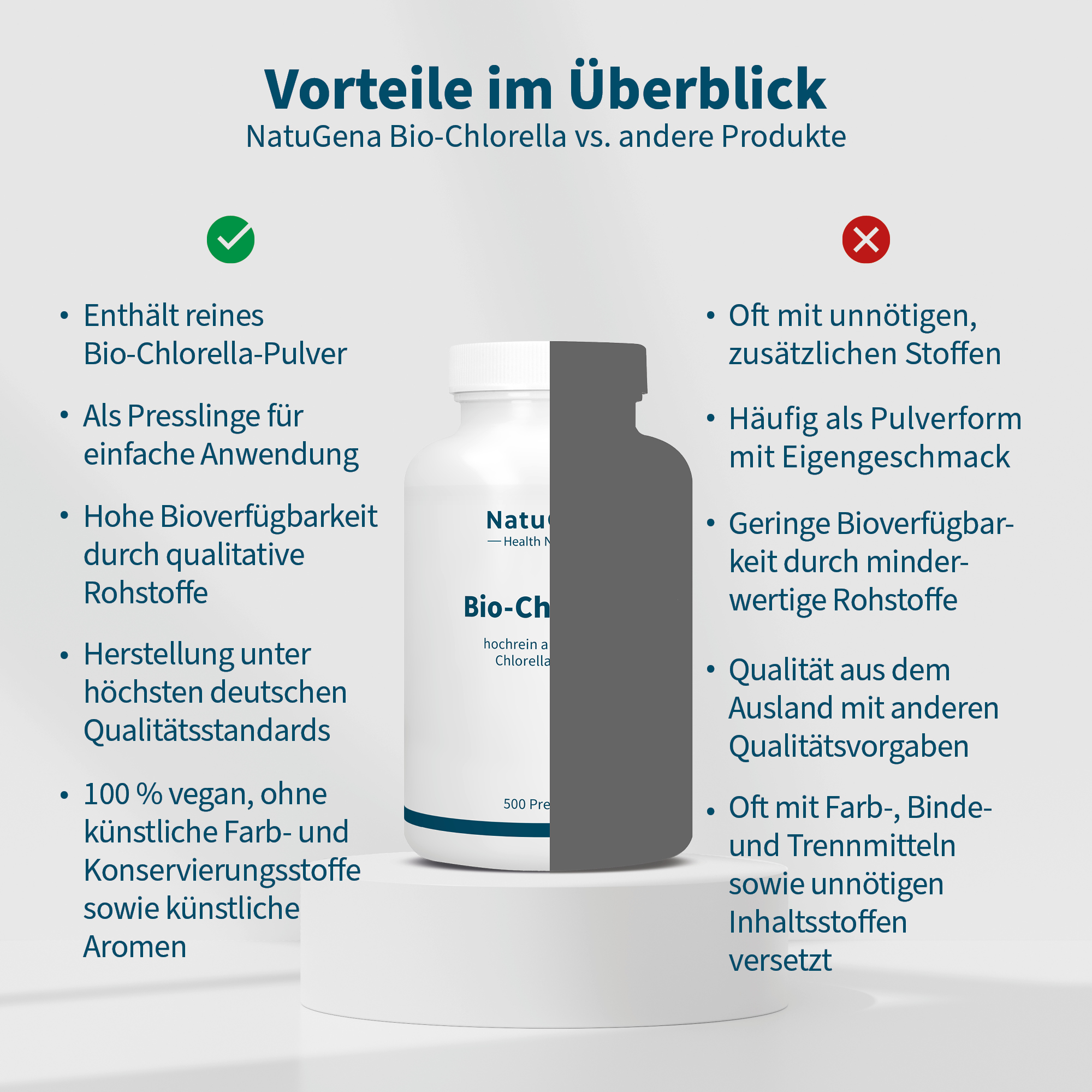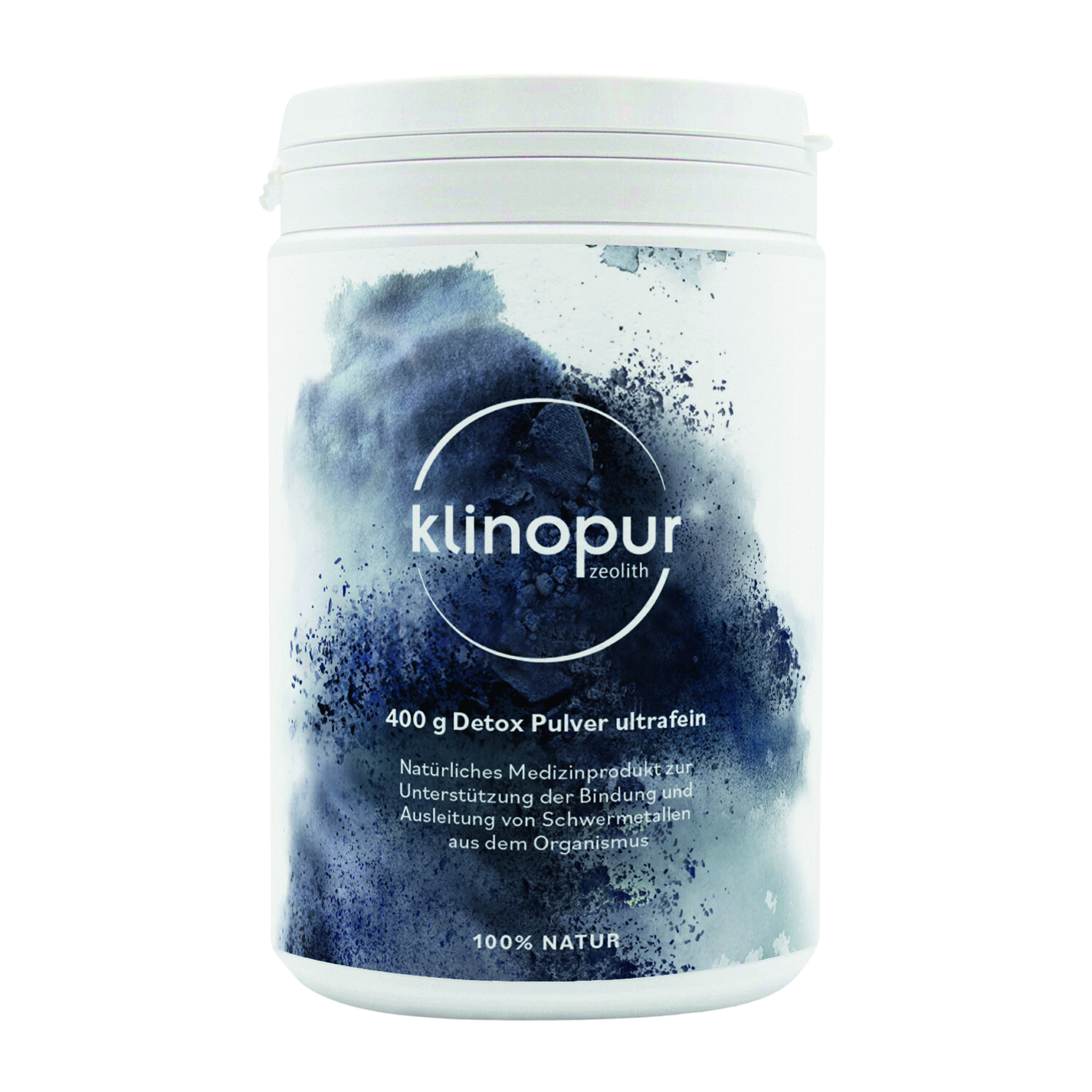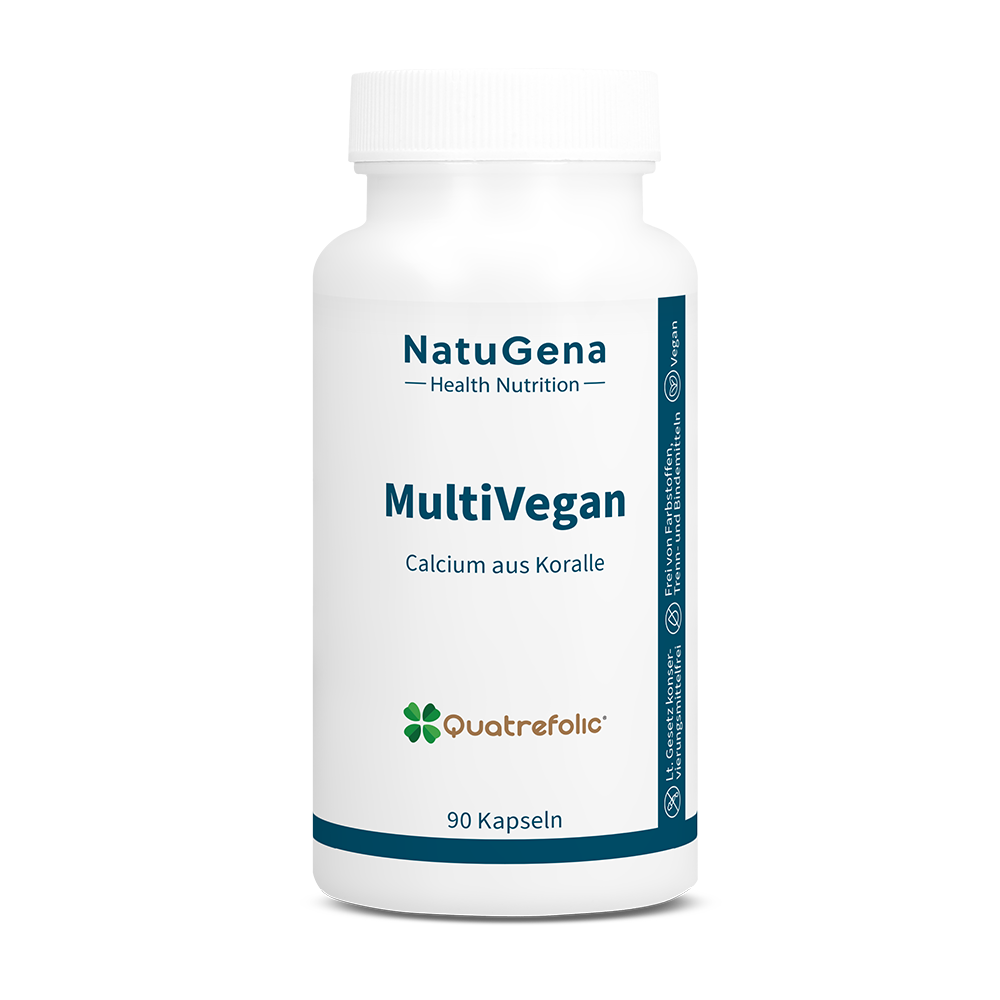Recommended intake
5 tablets once a day, alternatively spread throughout the day. It is best to take with a high-fat meal with 250 ml of still, lukewarm water or, optionally, with a teaspoon of omega-3 oil to increase bioavailability.
Information
Dietary supplements should not be used as a substitute for a balanced and diversified diet, nor a healthy lifestyle. Keep out of reach of small children. Store closed, in a dry and cool place, protected from light. Do not exceed recommended daily dosage
Does chlorella algae contain iodine? How much iodine does organic chlorella contain? Does it contain heavy metals?
Our products are regularly and carefully tested microbiologically, and checks are also carried out for possible contamination from residues, plasticizers, pesticides, and heavy metals. Chlorella is a freshwater algae and is cultivated in special organic fermenters. Thanks to the closed system, there is no contact with fish or seawater, and no heavy metals, microplastics, or other marine pollutants can enter our algae.
Unlike sea algae, chlorella contains hardly any iodine, as it is a freshwater algae. It is grown in precious metal or glass tube containers and does not come into contact with seawater. This means that you can also benefit from the healthy properties of chlorella algae if you have an overactive thyroid. Please allow at least 1 hour between taking this product and other supplements or medications. It is best to consume it at least 2 hours before or after a meal. See recommended intake.
Chlorella algae contains less than 70 micrograms of iodine per 100 grams. One Chlorella tablet from NatuGena weighs 0.4g, so each tablet contains a very low 0.311µg of iodine. 5 tablets contain 1.55µg (a pack of 500 tablets weighs approx. 200g, which means you consume around 47 µg of iodine per month).
Why take chlorella with a high-fat meal?
High-fat meals promote the absorption of fat-soluble components from chlorella, such as carotenoids and vitamins (such as vitamin A (beta-carotene), K1, E, as well as lutein, zeaxanthin, and omega-3 fatty acids (ALA). Chlorella is absorbed more evenly in the intestine and can simultaneously bind harmful substances absorbed from food in the digestive tract (heavy metals from fish consumption). The recommended intake is a guideline and can be adjusted individually.
Why do the recommended intakes for organic chlorella and TriTox differ?
Organic chlorella can be consumed with a high-fat meal to optimise the availability of certain vitamins from the chlorella. In addition to chlorella, TriTox also contains the dietary fibre seaweed pectin and is used more specifically for binding in the intestine – therefore, it is recommended to take it at a greater distance from meals and other products.





